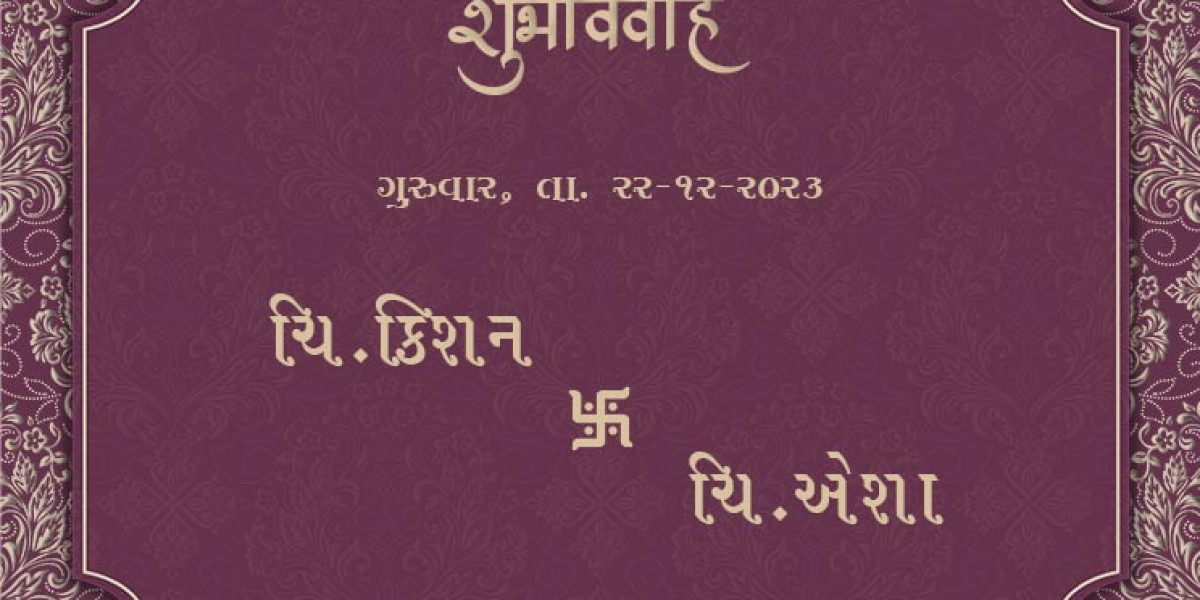Introduction
Creating a kankotri tahuko gujarati involves carefully blending tradition with modern wedding planning to ensure every aspect of the celebration reflects the cultural richness of Gujarati customs. This guide will help you navigate through the process of designing a comprehensive template that serves as a roadmap for planning a seamless and memorable Gujarati wedding. From selecting the perfect Kankotri design to organizing traditional ceremonies and choosing attire, this introduction will lay the foundation for building a detailed, culturally authentic, and personalized wedding template. Whether you are planning a grand celebration or an intimate gathering, understanding how to create a Gujarati wedding template will ensure that every detail, from rituals to decor, aligns with the vibrant traditions and values of Gujarati culture.
Tips to create Elegant Gujarati Wedding Invitation
1. Choose a Traditional Theme with Modern Touches
- Start by selecting a theme that honors Gujarati traditions while incorporating modern design elements. A blend of rich cultural motifs and sleek contemporary patterns can create a beautiful balance between elegance and tradition. For example, while using traditional symbols like peacocks or elephants, integrate them with modern minimalistic designs or abstract patterns.
2. Select a Rich, Traditional Color Palette
- Gujarati weddings are known for their vibrant colors. Choose a color palette that includes auspicious shades such as deep red, gold, maroon, and green, which symbolize prosperity and happiness. You can also incorporate pastel hues like soft pink, peach, or mint green for a more modern twist. The key is to balance bold traditional colors with subtle, elegant tones to create a refined look.
3. Elegant Typography with Gujarati Script
- Use a combination of stylish, modern fonts for English text and traditional Gujarati script for the main invitation. The name of the couple, as well as the tahuko (traditional wedding verse), should be written in an elegant Gujarati font. Ensure that the fonts are readable while maintaining the cultural authenticity. Opt for classic fonts like Serif for headers and a more graceful, cursive font for names and dates.
4. Embrace Cultural and Religious Motifs
- Incorporate traditional Gujarati symbols and motifs like lotus flowers, kalash, torans, and sacred symbols such as the swastika or Om. These motifs add a cultural dimension to the invitation and evoke a sense of spirituality. Position them delicately around the borders or as background patterns to avoid overwhelming the design while adding sophistication.
5. Add Intricate Borders and Frames
- To achieve a look of elegance, use intricate borders inspired by traditional Gujarati textile designs, such as Bandhani, Patola, or Zari work. Gold-foiled or embossed borders lend a royal touch, while laser-cut designs can add a contemporary flair. The borders should frame the text without overpowering the content, giving the invite a luxurious, well-structured appearance.
6. Highlight the Tahuko in Gujarati
- A key feature of Gujarati wedding invitations is the inclusion of a tahuko, a traditional verse that bestows blessings on the couple. Ensure the tahuko is prominently placed in the design, possibly at the top or in a standalone section. The typography should be artistic and elegant, using a classic Gujarati font to enhance the cultural feel.
7. Use High-Quality Paper and Finishes
- Choose premium paper that exudes luxury and elegance. Handmade paper, silk, or textured cardstock with a subtle sheen can elevate the invitation's tactile appeal. To enhance the invitation’s quality, consider using finishes like gold foil stamping, embossing, or metallic ink for details such as borders, names, or symbols. For an extra touch of class, you can use vellum overlays or silk ribbons.
8. Play with Layout and Text Alignment
- Create a structured layout that clearly highlights the important details—such as the names of the couple, date, time, and venue—while keeping the design uncluttered. Ensure that there’s enough white space around the text, which gives the design a clean, elegant look. Play with asymmetry or center-aligned layouts to create modern visual appeal while keeping the traditional essence intact.
9. Incorporate Religious Symbols and Blessings
- Gujarati weddings are often deeply spiritual, so incorporating religious symbols like Lord Ganesh, the Swastika, or sacred mantras is an important element. These symbols can be placed at the top or in the corner of the invite as a sign of respect and to invoke blessings for the ceremony. Adding blessings in Gujarati or Sanskrit further enhances the spiritual and cultural richness of the template.
10. Add Custom Illustrations or Personalized Elements
- Personalization is key to making an invitation feel special. Consider adding custom illustrations that depict the couple’s journey or include significant symbols that hold meaning for their families. Personalized touches like monograms, family crests, or subtle motifs related to their love story will give the invitation a unique, elegant twist.
Role of Elegant Gujarati Wedding Invitation
First Impression of the Wedding: The invitation sets the tone and expectations for the wedding. An elegant design reflects the grandeur, sophistication, and importance of the event.
Cultural Representation: It embodies the rich cultural heritage of Gujarati traditions, showcasing symbolic elements like motifs, colors, and tahuko (traditional verses), preserving cultural pride.
Formality and Respect: The invitation serves as a formal request to honor the presence of guests, conveying respect and gratitude toward their participation in the wedding celebrations.
Symbol of Auspiciousness: Incorporating traditional symbols like Om, Swastika, or Lord Ganesh ensures the invite invokes blessings for an auspicious and harmonious wedding.
Personal Connection: Personalized elements like monograms, family crests, or the couple’s names in Gujarati add a meaningful touch, making the invitation feel exclusive and intimate.
Showcase of Tradition with Modern Touch: It blends traditional elements with modern design, creating a balance that appeals to both older and younger generations, making the event timeless.
Emotional Significance: By including tahuko or personalized messages, the invitation emotionally connects with the guests, evoking feelings of joy, warmth, and anticipation for the wedding.
Communicates Essential Details: It provides guests with crucial information such as the date, time, venue, and dress code, ensuring smooth communication about the event logistics.
Keepsake Value: An elegantly designed wedding invitation often becomes a cherished keepsake, reminding guests of the beautiful ceremony and cultural significance long after the event.
Expression of Family Status and Values: A sophisticated invitation reflects the family’s values, hospitality, and social status, subtly communicating the importance of tradition, unity, and celebration.
Conclusion
kankotri design serves as an essential blueprint for planning a wedding that is both culturally authentic and flawlessly organized. By incorporating every aspect of the celebration—from the design of the Gujarati Wedding Kankotri to the intricate rituals and vibrant decor—the template ensures that the wedding reflects the rich traditions of Gujarati culture while accommodating modern touches. It simplifies the planning process, offering clear guidance on each detail, from attire and cuisine to guest management and post-wedding rituals. Ultimately, a well-crafted Gujarati wedding template helps create a cohesive, meaningful, and joyous celebration that honors the couple's heritage while providing an unforgettable experience for all involved.







